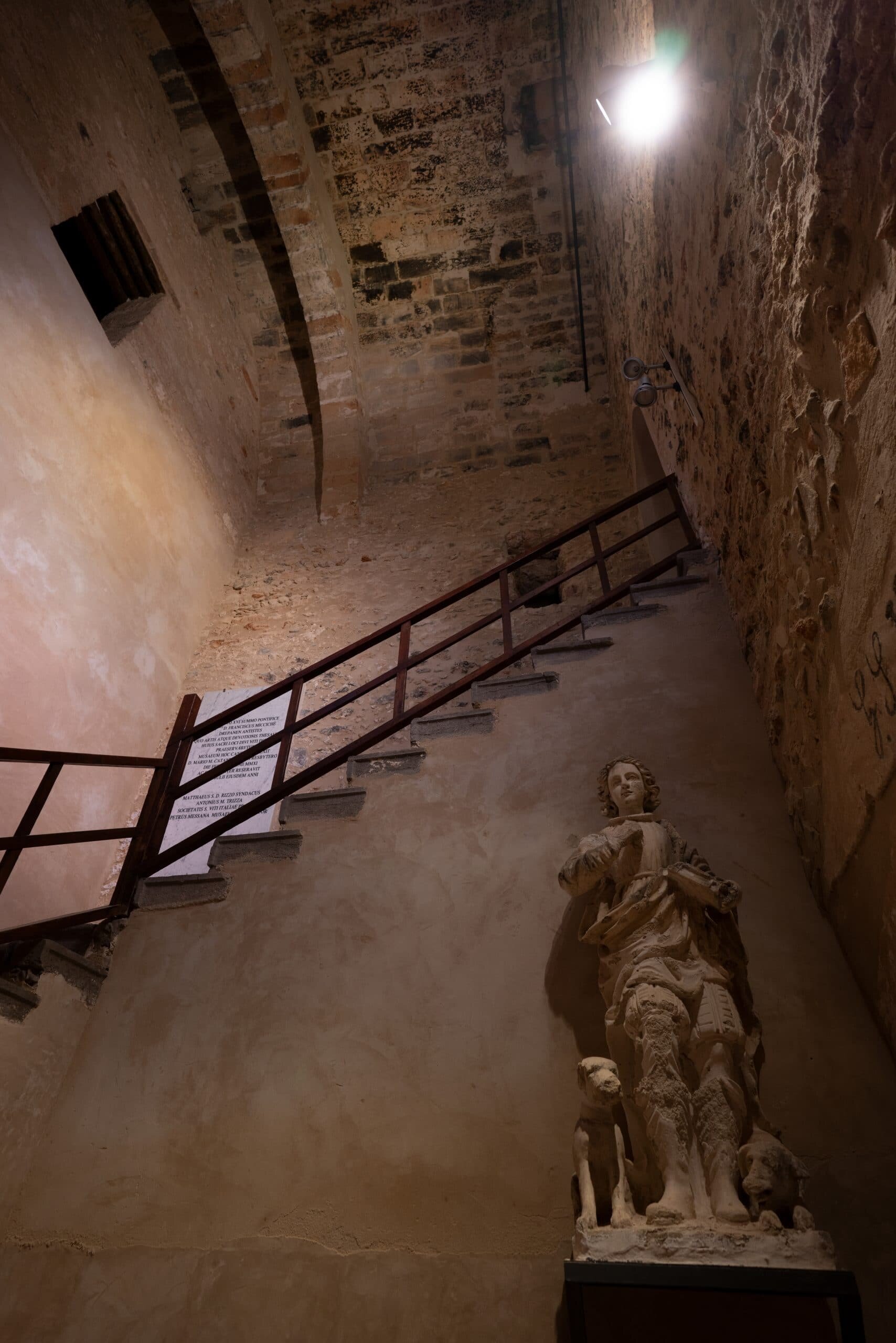Museums and exhibitions
Museum of the sanctuary of San Vito lo Capo
The Museum houses an exceptional collection of sacred silver, historical vestments, and a section dedicated to the spread of the cult of San Vito in Sicily and Italy.
The architecture of the building reflects the Sanctuary’s evolution over the centuries, blending military elements (such as the lance tower and loopholes), religious features (such as the votive niches and bell tower), and civil touches (such as the noble staircase and sundial). The first room is dedicated to silver works, mostly of Sicilian origin, spanning various periods from the late 1500s to the 21st century. Among the most important pieces are the 15th-century wooden statue of the Immaculate Conception and a 16th-century stucco Ecce Homo by Orazio Ferraro, which once adorned the Sanctuary’s main altar. The next room displays historic items, including the famous 17th-century green velvet chasuble.
he historical vestments, many of which come from Palermo workshops in the 18th-century, include a special focus on red pieces, such as chasuble, planet, dalmatic, and tunic. The Noble Staircase showcases a selection of paintings, including contemporary works. From here, visitors can access the room dedicated to popular devotion, where everyday objects donated to the Saint are on display: ex-votos, woodcuts, oil paintings, prayer cards, small statues, ceramics, and glass paintings, all coming from Italy and Europe. The room also features significant gifts from Italian towns connected to San Vito, such as the "centa" (braided candles) from the shepherds of Irpinia (San Gregorio Magno) and a model of the Sanctuary of San Vito from Nole (Turin).

